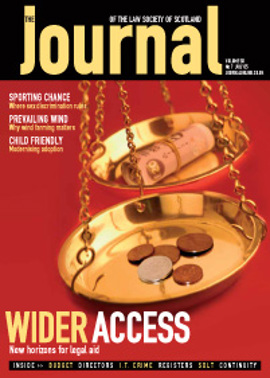Planning in the park

The ability of a National Park authority (rather than the local authority in whose area the National Park boundary lies) to control new development and to promote structure plans and local plans to manage or resist change in the environment is considered by many to be essential in achieving the conservation aims of a National Park. However, Scotland’s first two National Park authorities (Loch Lomond and the Trossachs National Park Authority, and the Cairngorms National Park Authority) – whose conservation interests are broadly similar – have been given markedly different planning powers. It is therefore important that all those involved in advising on property development in National Parks are familiar with these.
In examining the planning function of a National Park, regard must be had not only to the National Parks (Scotland) Act 2000 but also to the terms of a designation order made thereunder establishing a National Park. The designation order will specify the boundary of the National Park (by way of a plan) and provide for the establishment of a National Park authority. The designation order vests the National Park authority with its powers and duties, including its planning powers.
Fundamental aims
Fundamental to all of the decision-making processes (including the exercise of a planning function) of a National Park authority is its obligation under the Act to meet its statutory aims, which are conservation of the natural and cultural heritage; sustainable use of the natural resources of the area; access and education; and sustainable economic and social development of the area’s communities.
The achievement of all of these collective aims may not be possible in the exercise of a planning decision, due to the impacts of a particular proposal or project. The Act provides that where it appears to the authority that there is a conflict between the National Park aims, greater weight must be given to conservation of natural and cultural heritage. The application of this overriding criterion will be pivotal where a National Park authority exercises a planning function. This is known as the “Sandford principle”.
It is extraordinary that different planning powers are devolved to the Loch Lomond and the Trossachs National Park Authority (“LLTNPA”) and the Cairngorms National Park authority (“CNPA”) under their designation orders.
The LLTNPA has been conferred with powers to decide all planning and related applications and to enter into planning agreements in relation to development within the National Park. All planning and related applications must therefore be submitted to the LLTNPA for a determination. It is required to prepare and adopt local plans but is not empowered to prepare structure plans, although the local authority preparing these must consult it.
In contrast, the CNPA only has power to decide planning or related applications where it decides to exercise its power to call in that application in circumstances where the proposed development raises a planning issue of “general significance” to the National Park. All planning and related applications will continue to be submitted to and determined by the existing local authorities (of which there are five), but there is duty on the local authorities to notify the CNPA of any planning or related application for development in the National Park. It is required to prepare and adopt local plans but is not empowered to prepare structure plans, although the local authority preparing these must consult it.
Setting the framework
In addition to the requirement on both the LLTNPA and the CNPA to prepare local plans for their area, they also have a duty to prepare and submit a National Park plan to the Scottish Ministers setting out their policies for the management of these National Parks. The National Park plan together with any local plan will be central to a National Park authority’s planning decision-making. Prior to submission of a National Park plan there is a duty to consult with stakeholders and the Scottish Ministers can approve it, reject it or modify it. The National Park plan for Loch Lomond and the Trossachs has recently been published for consultation.
The establishment of Scotland’s first two National Parks provides a new set of planning arrangements with additional duties being placed upon all planning decision-makers in regard to development within National Park boundaries. There is continuing pressure for further National Parks, which will create debate over any new National Park boundaries and the extent of planning control given over. The Act also provides for the establishment of “marine” National Parks, which in themselves raise particular issues due to the fact that planning control is limited to above the low watermark. Indeed, Scottish Natural Heritage has recently been asked by the Scottish Ministers to draw up a list of potential sites for marine National Parks which may include onshore and offshore areas.
Alastair McKie, Joint Head of Planning & Environment, Anderson Strathern
In this issue
- Commissioner: Public Authorities must do more
- Supporting legal aid
- No country cousins
- Making the money go further
- Adopting a new approach
- Gordon giveth and Gordon taketh away
- A blow for the future
- A Wie hint of change?
- Raising the bar
- The IT crimewave
- The directing mind
- Going through the motions
- Planning in the park
- Always look on the bright side
- Scottish Solicitors' Discipline Tribunal
- Website reviews
- Book reviews
- The race to the registers revisited
- SDLT: getting it right
- SDLT: barcoding
- Business sense






